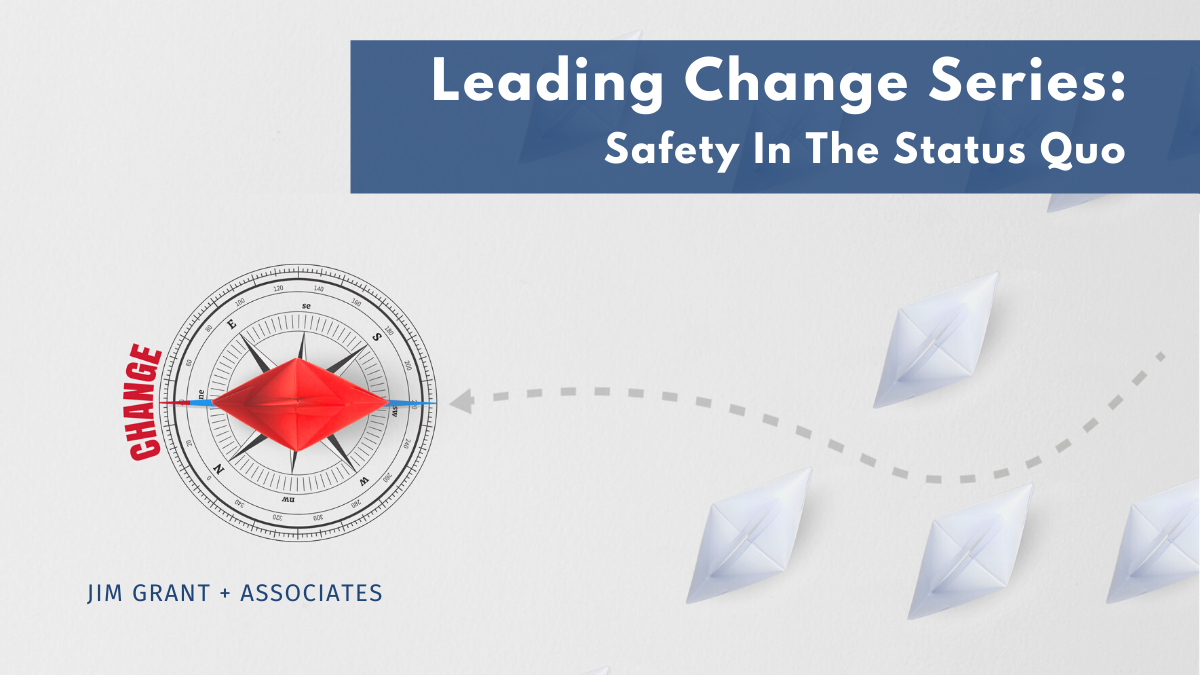Leading Change: Safety In The Status Quo.
The safety of the status quo, in and of itself, has serious temptations. Although the devil you know is not necessarily good, it is at least predictable and easy. Change, conversely, is less predictable. It can also involve a fear of failure or adopting erroneous beliefs, such as wanting to have absolute certainty that the change will work. Further, undesirable behaviours may, in fact, serve other needs. For example, the smoker who knows it is bad to smoke may also find that a few cigarettes a day calms their nerves. And so stopping smoking may take away their ability to be calm. Often, people who struggle with change can find themselves pulled in two directions: one by their motivation to change and the other by their motivation to remain the same. Understanding and balancing these competing ‘needs’ or forces is an important predictor of successful change. Further, the intrinsic drives or motives – What I want to do is … – are much stronger than extrinsic ones – What you ought to do is … – and have a more enduring impact on a person’s behaviour. Homeostasis (the mind-based mechanism that pushes back against the push to change) is a reality for most of us. When the environment threatens or we are wary of an approaching pleasure or danger, we prepare to act and respond. The body mobilises reserves of energy and produces certain hormones, such as adrenaline, which prepare it for conflict or flight. This mobilisation is evident in physiological reactions, such as when we experience emotions associated with danger or physical exertion. Our heart beats faster and respiration quickens. Our face can turn red or pallid and our body might perspire, our shoulders hunch or our hands and chest tighten. We may become short of breath, get cold sweats, shiver and feel trembling legs. These physiological manifestations reflect the efforts of the body to maintain its internal balance. Our responses can also be straightforward – drinking when we are thirsty, eating when hungry, putting on a warm jumper when cold, or opening a window when we feel hot. Further, behavioural responses are not easy to predict and can be counter-intuitive. Just when we expect a certain reaction as the result of a specific action, an unexpected and often contrary action can occur instead. For human beings with all their complexities, to just endure (Hang in there!) is not enough; we adapt ourselves to environmental change and we evolve, or others sometimes do it for us or to us. When we apply these insights to our professional lives and businesses, the paradoxical situation that confronts us with homeostasis is whether a stable person in a stable organisation, whose objective is to ‘maintain and endure’, can actually change when needed.“The constancy of the internal milieu is the essential condition to a free life.”
Claude Bernard French physiologist, in An Introduction to the Study of Experimental Medicine (1865)


